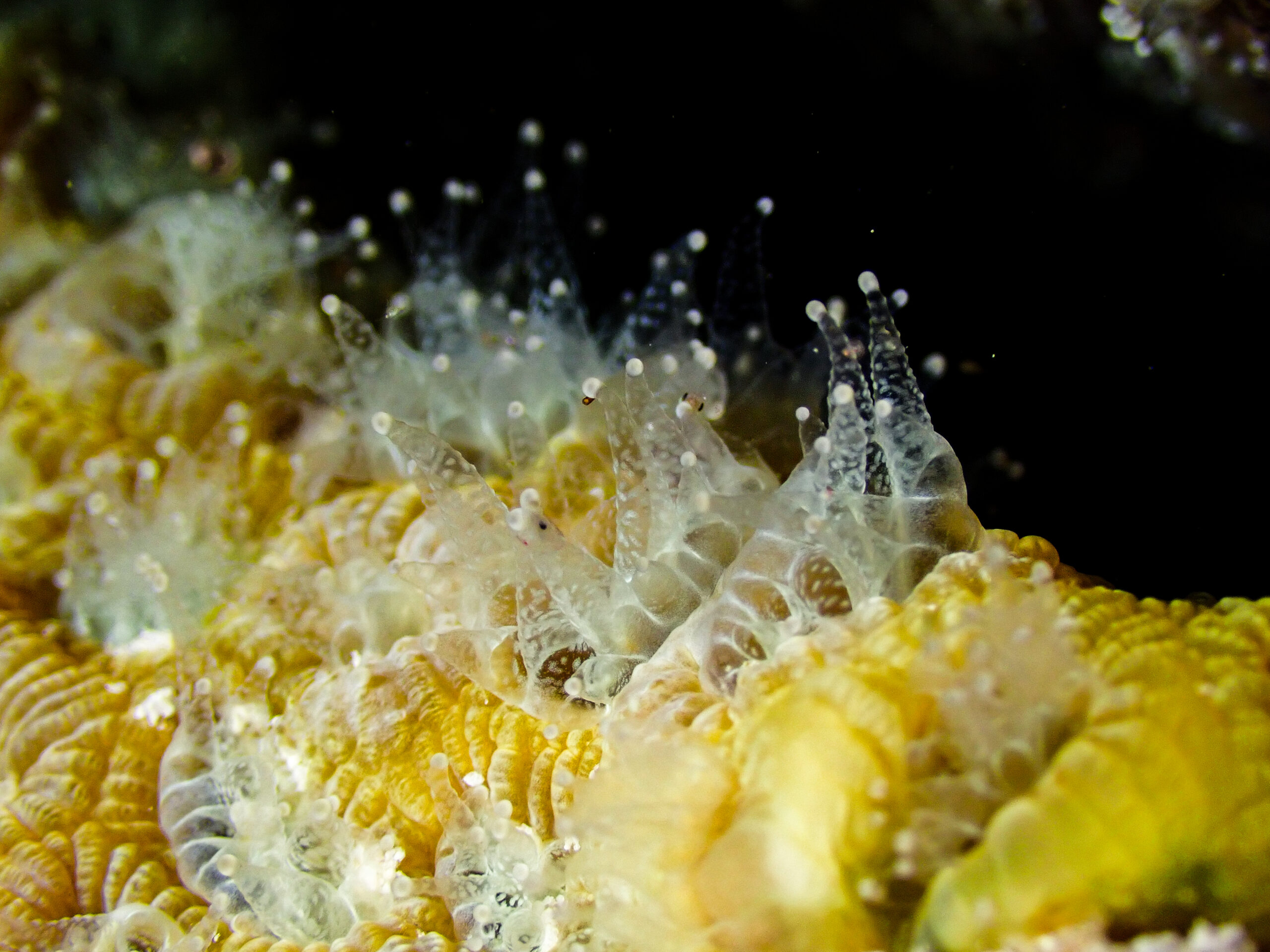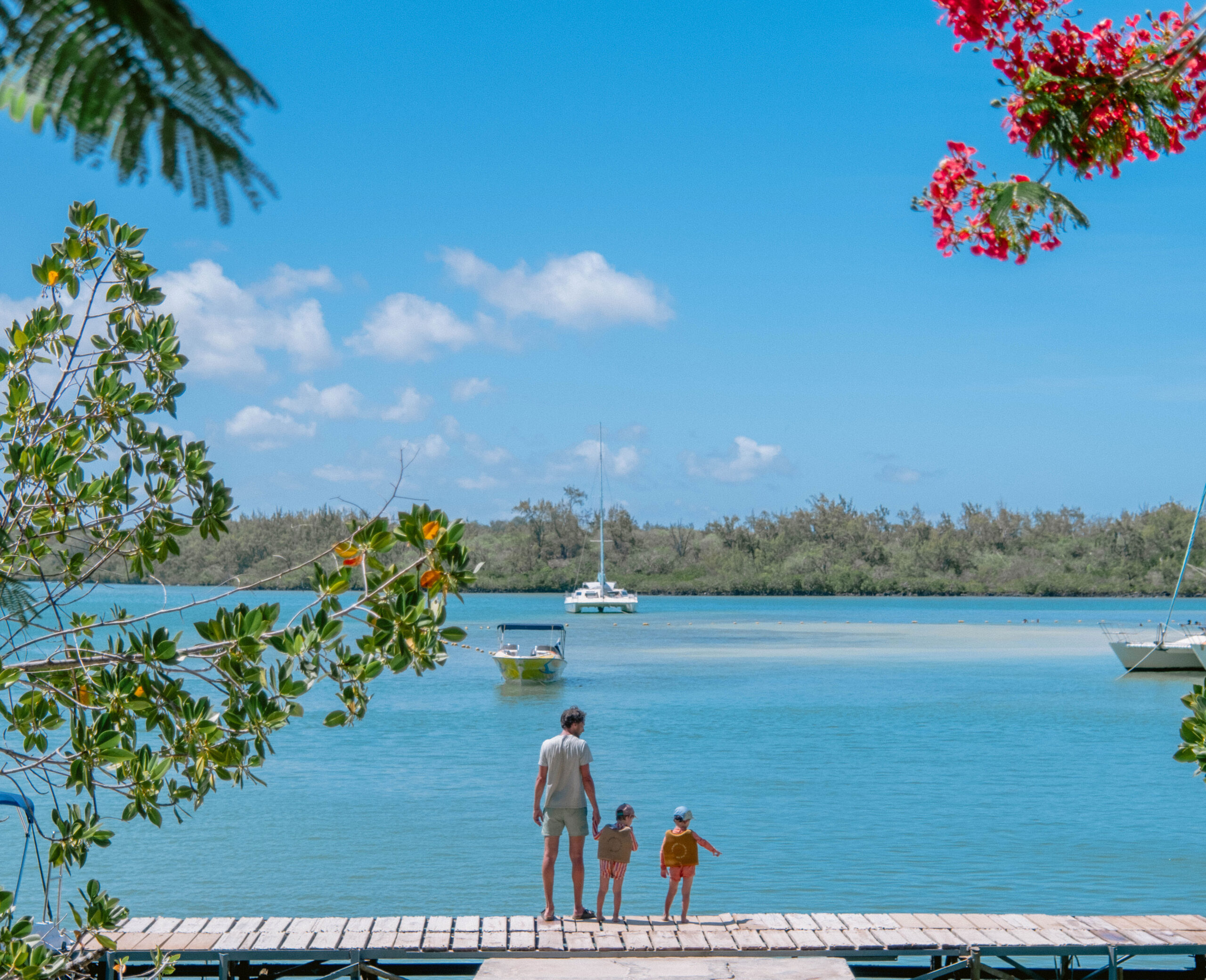Night slowly falls over the lagoon. The full moon begins its slow, glowing ascent. All is quiet. But don’t be fooled — the calm is only on the surface.
Beneath the waves, the reef awakens. The ocean comes to life. Thousands of tiny pinkish bubbles rise in a silent, hypnotic ballet. They float, merge, and scatter with the current.
These tiny bubbles are male and female reproductive cells — sperm and eggs — released by the corals. Their fusion will give birth to a new generation of life.
This natural phenomenon is called coral spawning. Rare, mesmerising, and absolutely essential to the survival of marine ecosystems.
Something that rare?

credit: Shivam Gopalsing
Yes, coral spawning in /span> Mauritius only occurs a few times a year, typically between October and March
Why so rarely? Because several conditions must align perfectly: water temperature, moon cycle, season, and ocean currents. But when everything is just right, the magic unfolds…
Vital for the health of our reef
Behind the beauty of this event lies an ecological powerhouse. Corals can’t move — they’re fixed to the seabed. So to reproduce, they rely on perfectly timed releases of eggs and sperm into the water. Teamwork at its finest!
Coral spawning ensures the regeneration of reef life. It helps form new colonies, repair fragile areas, and preserve the biodiversity of the lagoon.
Because a healthy reef is much more than a pretty sight:
- It shelters an extraordinary range of marine life
- It protects our coastline from erosion
- And it regulates the entire lagoon ecosystem
When coral spawning is successful, an entire ecosystem can breathe again.

Credit: Shivam Gopalsing
A magical and colourful display
In some areas, the surface of the water turns pink — as if the lagoon had dressed up for the occasion.
This stunning sight comes from the high concentration of reproductive cells. As they meet and merge, they form larvae that will soon grow into brand-new coral colonies. Many won’t survive — but each tiny bubble plays its part in the future of the reef.

The Marine Discovery Centre: Quiet guardian of the reefs
In Mauritius, this delicate rebirth is closely monitored by the teams at the Marine Discovery Centre (MDC)— a space dedicated to reef conservation and funded by the Attitude Foundation, located at .Lagoon Attitude hotel.
During spawning nights, marine biologists and volunteers carefully monitor the lagoon. They record every observation: coral species, timing, water conditions.
These precious insights feed into scientific research led with SECORE International, MDC’s research partner. Together, they’re identifying the coral species that spawn in Mauritius, work toward actively restoring and preserving the reefs and the timing of each cycle — helping to protect this fragile ecosystem.
If this inspires you, you can even join as a volunteer. And you won’t just be observing — you’ll join field trips, help collect data, and become part of something meaningful. A rare chance to contribute to essential marine science.
Observe. Understand. Protect : Three simple ways to care for our oceans.
If you’re in Mauritius between October and March, keep your eyes open. You just might witness the incredible moment when corals give life.











Comments